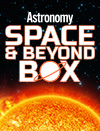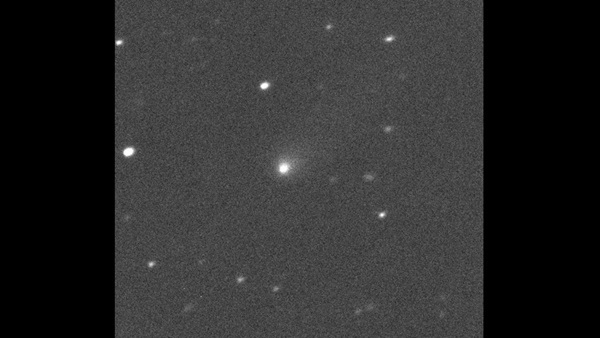Astronomers may have just discovered an interstellar comet visiting o – Astronomy Magazine
Astronomers first found Comet C/2019 Q4 on August 30. The past week of observations, including this image taken by the Canada-France-Hawaii Telescope on Hawaii’s Big Island, have increased astronomers confidence that the comet started life in another solar system.
Canada-France-Hawaii Telescope
The potential interstellar comet, which so far is only a fuzzy blip, was first seen on August 30 by observer Gennady Borisov. Ever since then, astronomers around the world have been tracking it and mapping its trajectory to determine its origin. The preliminary data suggests that the object could have originated outside our solar system.
 Bringing the universe to your door. We’re excited to announce Astronomy magazine’s new Space and Beyond subscription box – a quarterly adventure, curated with an astronomy-themed collection in every box. Learn More >>.
Bringing the universe to your door. We’re excited to announce Astronomy magazine’s new Space and Beyond subscription box – a quarterly adventure, curated with an astronomy-themed collection in every box. Learn More >>.
While ‘Oumuamua wasn’t seen until it was on its way out of the solar system, C/2019 Q4 is still on its way in — and should remain visible for a year. With current orbit calculations, C/2019 Q4 is expected to reach its closest approach to the Sun in December 2019, providing astronomers with time to observe it more closely. The comet will likely come within 2 AU of the Sun, which is outside the orbit of Mars. Though currently around a brightness magnitude around 18 —too dim to be seen with a small telescope — the comet is expected to brighten to around 15th magnitude.
In order to determine if an object started its life outside of the solar system, astronomers plot its orbit to find the arc and speed at which the object travels. In order to get the most accurate trajectory, astronomers need to have multiple days, ideally weeks, between measurements. Then, using mathematical models, astronomers fit the measurements to an orbit, which lets them see where the object came from.
Early calculations suggest that C/2019 Q4 has a hyperbolic orbit — meaning one that that has the ability to escape the Sun’s gravitational pull. The measurements so far suggest C/2019 Q4 is interstellar, but not all objects confirmed to have a hyperbolic orbit are interstellar visitors. There are over hundreds of known comets with hyperbolic orbits that have originated in the Oort Cloud, an icy group of leftover material on the outer edge of the solar system. Occasionally, objects from the cloud are dislodged and sent on a one-time trip into the inner solar system where they are sling-shotted by the Sun and out into interplanetary space.






